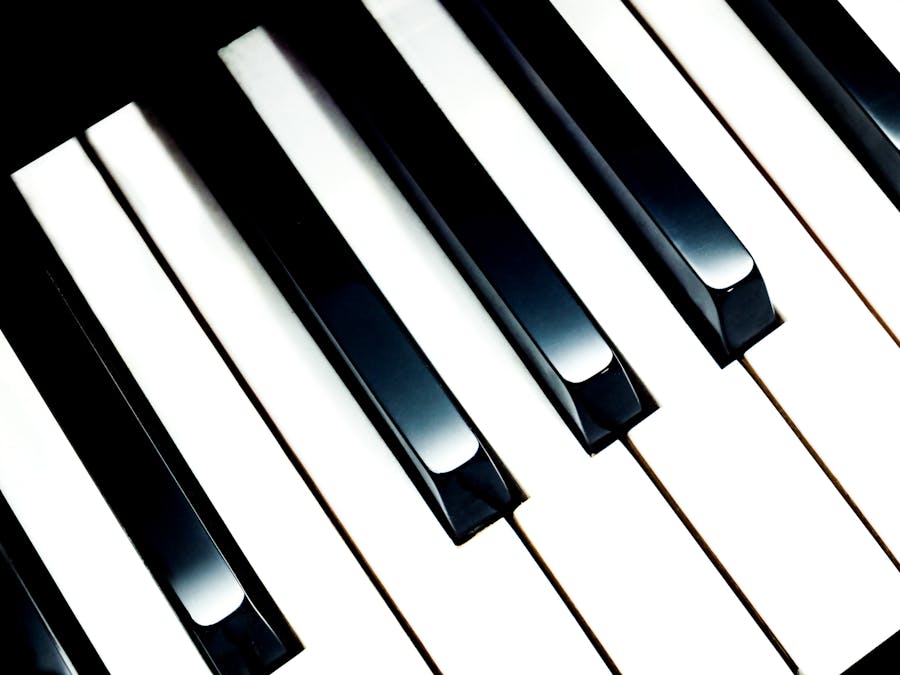 Piano Guidance
Piano Guidance
 Piano Guidance
Piano Guidance

 Photo: Erik Mclean
Photo: Erik Mclean
Most of the weight of any piano comes from its extremely heavy cast iron harp. Small upright pianos only weigh 300 to 400 lb because they have a smaller cast iron harp than big upright pianos. Big uprights run from 600 to 800 lb. Big old player uprights can even hit 1000 lbs.

Jazz Pianists a lot of the time do not read traditional double clef music. Instead Jazz Pianist usually read chord charts that also have the melody...
Read More »
Facetime Music Lessons If on a phone, the app can be used over wifi or the cellular network, which can help eliminate lag and technical connection...
Read More »You should be aware of the weight of the piano being moved before you move it. Most of the weight of any piano comes from its extremely heavy cast iron harp. Small upright pianos only weigh 300 to 400 lb because they have a smaller cast iron harp than big upright pianos. Big uprights run from 600 to 800 lb. Big old player uprights can even hit 1000 lbs. because of the heavy player mechanism. The biggest upright piano height only runs up to 60 inches, topping out in weight at 800–900 lb. The smallest grand piano starts at 54 inches long which is equivalent to a 54 inch tall upright and weighs about 500–600 lb. Grands can extend out to 108 inches long for a 9' concert grand topping out at 1000–1200 lbs. Liberace's piano was a specially-made, monstrous 12-foot long grand piano weighing over 1500 lbs. He had it custom-made just for him because he knew that the longer the grand piano is the better the bass notes sound during play. Higher piano notes come from straight strings so their length doesn't matter much but bass notes come from wound strings so the longer the piano, the longer the bass string, the better it resonates. Large grand pianos are quite heavy, even more so than large upright pianos. Grand pianos can weigh anywhere from 500 to 1200 lb. Baby grand pianos are 4 foot 6 inches to 6 foot 6 inches long and they can weigh between 500 and 800 lbs. But longer grand pianos weigh much more and should always be moved by professionals because the piano dollies have about an 800 - 900 lb. weight restriction. In fact, just because of their extreme weight, big uprights over 42 inches high or grand pianos which are 5 1/2 feet long or longer should always be moved by professionals. Pianos smaller than that can be moved by 4 or 5 amateurs with a little bit of training as long as they do not have to traverse over 4 steps in the move path.

Disadvantage -- Reduced Instructional Time A shortened school day would reduce the amount of instructional time. For some laboratory classes...
Read More »
20 Hardest Majors: The Ultimate Guide Chemistry. At number one on the list is chemistry. Architecture. ... Chemical Engineering. ... Computer...
Read More »Grand pianos have to be broken down (without breaking them of course), by removing their 3 legs and the lyre and mounting them on their long side onto a piano skid board, which is an involved process. But here, we don't want to get too bogged down in our discussion so we suggest you view our 5 minute grand piano moving slideshow presentation on this subject at burrowsmoving.com/resources/piano.swf. Instead, we will here go on to speak in general of all the things that must be done in order to teach you how to move your piano from its origin point to its final destination point.

This Jazz chord progression is made up of three basic chords built from the first (I), second (II) and fifth (V) degree of the major scale. Each...
Read More »
Classical Piano Jobs Becoming A Concert Pianist. ... Accompanist or Collaborative Pianist Careers. ... Piano Teacher/Instructor Career. ......
Read More »CARRYING A PIANO OVER MORE THAN 4 CONSECUTIVE STEPS [ edit | edit source ] If there are too many consecutive steps at any given point in the move path these tip and lift - cheat techniques will not work. More than 4 low consecutive steps in the move path automatically dictates to the crew that they must carry the piano. Notice in the picture below that the first step has been cheated with the dolly and just 3 more steps are well covered by the piano's bottom. The 4th step that it could reach would not be covered enough for a safe cheat and in this case, there is even one more step above that one so this crew will absolutely have to carry this piano in order to traverse all the steps. Carrying the piano up / down stairs is the most dangerous part of piano moving and this is the reason why we try to convince you to not move your piano yourself. Once the piano is being carried, even if it is only being raised or lowered 1 or 2 steps at a time, it can very easily go out of balance and get away from the crew causing terrible things to happen very, very rapidly resulting in severe injury and / or piano damage. So please pay close attention to that part of the website's instruction about actually carrying the piano. For now we will just stay general in our discussion about how-to-move your piano.

4 Things EVERY Beginner Piano Player Needs To Know #1 – Your Brain WILL Work Faster Than Your Fingers. #2 – Play Songs Right Away. #3 – Practice...
Read More »
If your piano has gone without tuning for an extended period of time, its pitch may have dropped well below standard pitch at which it was designed...
Read More »
Fur Elise by Beethoven is about ABRSM grade 5 standard, or RCM Level 7. However, the opening of the piece, which is the most well-known part that...
Read More »
How rare is perfect pitch, and is it genetic? A commonly cited number is that approximately one in 10,000, or . 01% of people, are thought to have...
Read More »